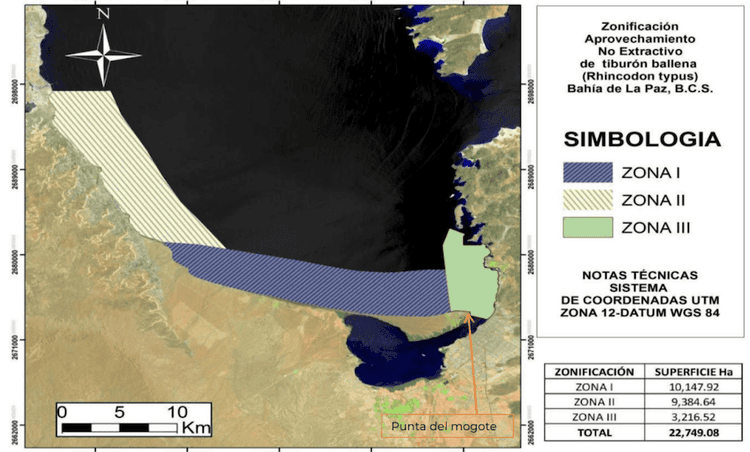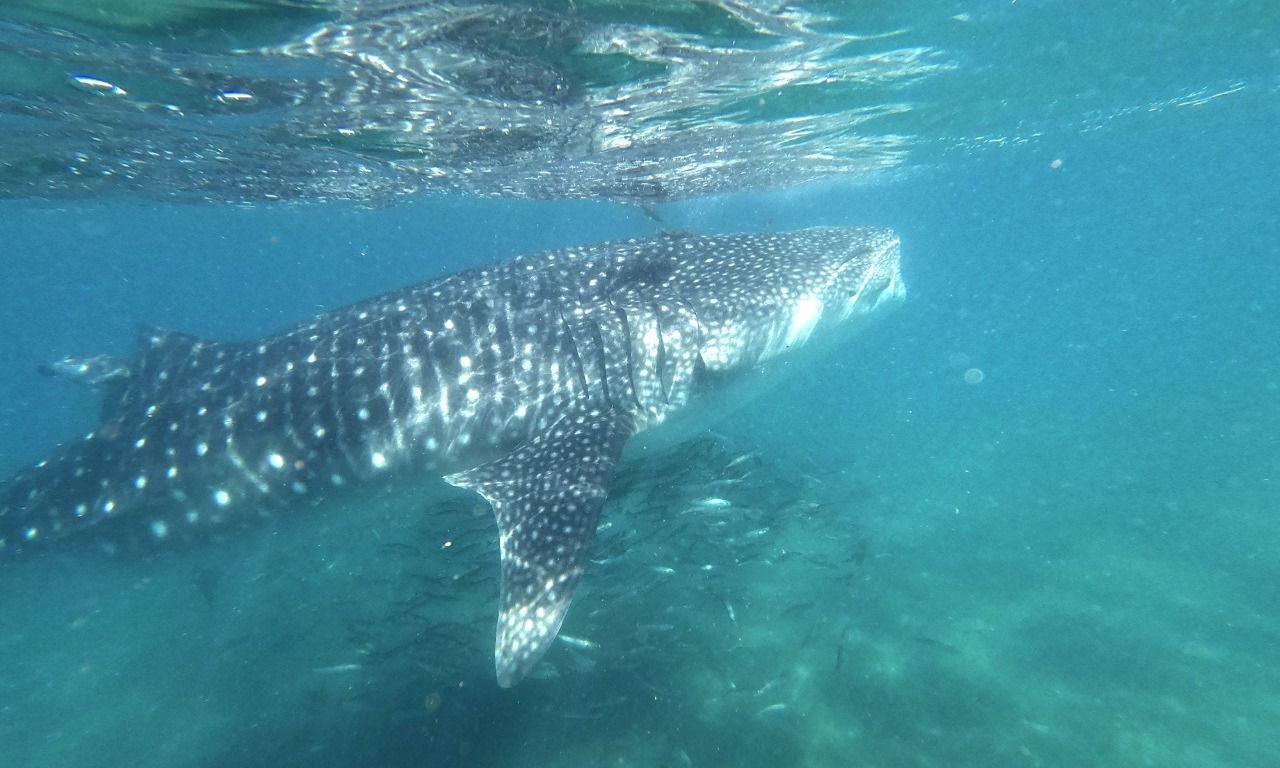The season for swimming and whale shark watching in La Paz Bay, in northwestern Mexico, began in November and, despite the advances made in regulating this activity, injuries and harassment to the species persist, according to Tiburón Ballena Mexico, an organization that keeps a record of injuries to specimens.
The reduction from 98 to 83 authorizations of permits for the non-extractive use of whale sharks, issued to tourism service providers, in Baja California Sur between the 2020-2021 and 2023 seasons is beneficial to the reduction of injuries, said Ramírez, director of that organization.
Ramírez points out that tourism service providers hurt and harass whale sharks. They, however, attribute it to other unauthorized vessels that transit the area or that intentionally approach to attempt to do the activity illegally.
This occurs, mainly, because of violating the established speed for traveling in the Whale Shark Refuge Area and the shifts in and out of the Area for tourist service providers.
As well as the presence of boats without permission and without trained captains, who do not know the distance rules and pass over sharks, causing injuries and scrapes with the engine, explained Karen Acevedo, biologist, tour guide and collaborator at Ecology Project International (EPI) Mexico, an organization dedicated to conservation.
According to the results of the monitoring of Whale Shark Mexico, it can be seen that in 2016-2017 there was the highest percentage of injuries in identified sharks (77%) and since then the percentage has been decreasing.
However, Ramírez points out that 48% of sharks injured in 2021-2022 is still a high figure for all the regulations that exist and it is a sign that human beings and the whale shark cannot yet live together without harm to the species, so it is necessary to continue strengthening protection for it and its habitat.
Nezahulpili Tovar, member of the Representative Committee of Authorized Whale Shark Operators A.C., points out that the opinion of tourism service providers is that the activity is over-regulated for them, while there is an underregulation of the authority regarding unauthorized boats that transit the Whale Shark Refuge Area and that attempt to carry out activities illegally.

Source: Management Plan
Although most of the season the whale shark is located in Zone I, which extends along the coastal strip known as El Mogote from Las Casitas to El Califin beach (32km), the specimens move to other areas such as Zone III, which includes a channel that connects La Paz Bay to the Gulf of California through which all types of boats dedicated to activities other than whale sharks pass and are therefore unaware of the traffic rules in the area.
The source of this problem, Tovar points out, is the lack of capacity and presence of the Federal Attorney for Environmental Protection (Profepa), who is responsible for monitoring compliance with the Management Plan in the Refuge Area, and, where appropriate, of punishing anyone who does not.
But also the lack of a Protection Program, which unlike the Management Plan, which focuses on observing and swimming with whale sharks only, is responsible for protecting the species and its habitat, that is, the entire Bay of La Paz.
Without this document published, Tovar points out that there are no legal or legal tools they can use to commit increasing marine traffic to respect the rules of the Refuge Area.
The Protection Program is developed by the Secretariat of Environment and Natural Resources (Semarnat). However, Conanp reported that only two meetings have been held for the construction of a draft, attended by five people, despite the fact that interested academic, social and private sectors must participate in its preparation.
“Until now, what we have clung to is the Management Plan for observation and swimming activities, however, for example, it does not contemplate fisheries, aquaculture or mega-cruises. On the other hand, the Protection Program already talks about the integration of the entire area and all the things that can affect the species, such as mining and development,” Ramírez added.
Currently, the Whale Shark Refuge Area, which covers 22,000 hectares of La Paz Bay, has a surveillance system that is mainly supported by the voluntary contribution of service providers, and with support from the federal budget of the National Commission for Protected Natural Areas (Conanp) and philanthropic donations, says Cecilia Blasco, executive director of the Sustainable Tourism and Social Development Network A.C. (RED).
Ramírez pointed out that in this way, the providers “are judge and party.” Since they finance and also monitor in collaboration with authorities and organizations.
Therefore, it is necessary to evaluate the advantages and disadvantages of a system based on private and voluntary funding, Blasco said.
Meanwhile, through the reduction of permits, the training that has been provided to those who provide tourist services and the decrease in the speed for traffic in the Refuge Area established in the Management Plan, Ramírez expects that there will be a decrease in the number of specimens injured by boats in the 2023 season.
However, this decrease will not be significant if Profepa's surveillance is not strengthened in the Refuge Area, the captains of ships with or without permission to carry out the activity are trained and the protection program is drawn up, tourism service providers warned.
Both civil society and tourism service providers agree that these actions are urgent to prevent them from becoming an uncontrolled activity with risks for sharks and visitors, so as to protect the species and its habitat.



Comentarios (0)